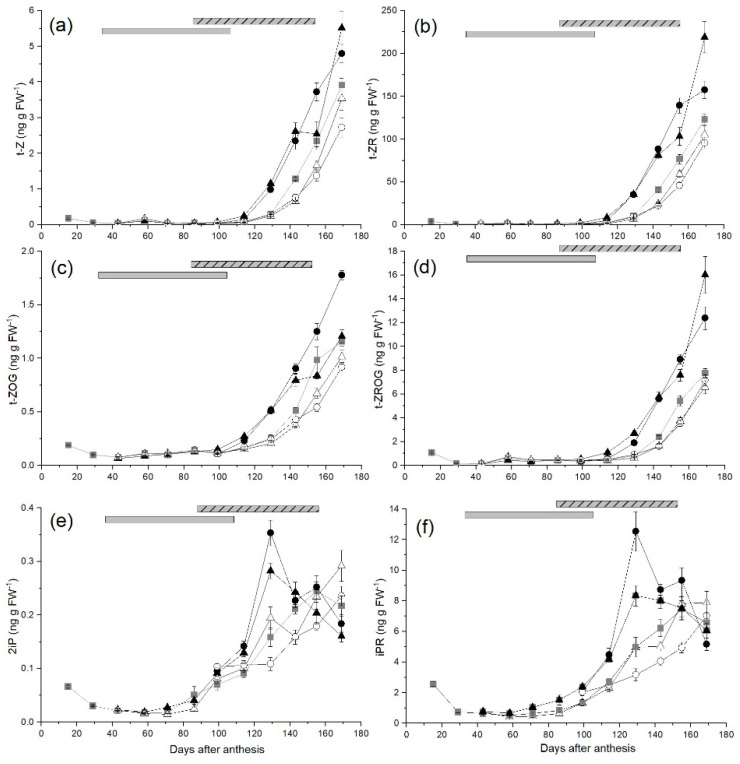Figure 4.
The effect of time of manipulation of carbohydrate supply together with phloem girdling on (a) trans-zeatin (t-Z) (b) trans-zeatin-O-glucoside (t-ZOG) (c) isopentenyl adenine (2iP) (d) isopentenyl adenine riboside (iPR), (e) trans-zeatin riboside (t-ZR) and (f) trans-zeatin riboside-O-glucoside (t-ZROG) concentration of Actinidia chinensis var. chinensis ‘Zesy002’, kiwifruit, from anthesis through to harvest. Data are shown for ungirdled control canes (■), early girdled canes with high (▲) or low (△) carbohydrate supply or late girdled canes with high (●) or low (○) carbohydrate supply. Early treatments were applied at 38 days after anthesis with the duration of the open girdle shown by the grey solid bar at the top of each panel. Late treatments were applied at 86 days after anthesis with the duration of the open girdle shown by the grey/black stripped bar at the top of each panel. High carbohydrate supply treatments had six leaves per fruit, while low carbohydrate supply treatments had one or two leaves per fruit. Data are means ± SEM, n = 5.

